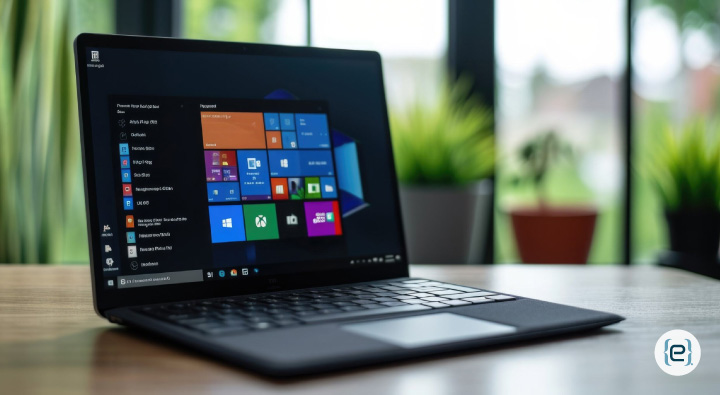The Story of Microsoft Office: From Floppy Disks to Cloud-Powered Productivity (and a Few Paper Clip Jokes Along the Way)


The Evolution of Microsoft Office
Microsoft Office has come a long way since its humble beginnings in 1990. What started as a simple bundle of productivity software has grown into a powerhouse suite used by millions worldwide. From typewriters to touchscreens, Office has adapted and evolved to meet your changing needs.
The story of Microsoft Office is one of innovation and perseverance. It has transformed from a basic set of programs to a cloud-based ecosystem that connects people and enhances productivity across devices and platforms. Each version brought new features and improvements, from the introduction of the Ribbon interface to the integration of AI-powered tools.
Remember when floppy disks were all the rage? Office was there. Now we’re in the age of real-time collaboration and cloud storage. Office is still here, keeping up with the times like that one friend who always knows the latest trends. It’s been quite a journey, and who knows what exciting features the future holds for this trusty digital sidekick?
The Birth of Microsoft Office
Microsoft Office began in 1988 as a suite of productivity tools. It brought together existing programs to create a powerful package for businesses and individuals.
- The Initial Release and Vision: Microsoft announced Office at COMDEX in 1988. The first version hit shelves in 1990, bundling Word, Excel, and PowerPoint into one package. The goal was simple – give users all the tools they need in one place. Before Office, people had to buy programs separately, making things expensive and confusing. Bill Gates saw the potential for an all-in-one solution, aiming to make computers easier for everyone to use. Office was a big step toward that dream.
- Key Contributors and Their Roles: Many talented folks helped create Microsoft Office. Here are some key players:
-
- Bill Gates: The big boss. He saw the vision for Office and pushed the team to make it happen.
- Jeff Raikes: Left Apple to join Microsoft. He became the driving force behind Office’s development.
- Richard Brodie: Wrote the first version of Microsoft Word. His work laid the groundwork for Office.
- Doug Klunder: Led the Excel team. Excel became a cornerstone of the Office suite.
These pioneers worked hard to make Office a reality. Their efforts changed how we work with computers forever. (And let’s be honest, they probably had a few too many late-night coding sessions fueled by pizza and coffee!)
Evolving with Technology
Microsoft Office has come a long way since its early days. The suite has embraced new technologies and adapted to changing user needs over the decades.
- From Floppy to Cloud: Office started on floppy disks in the 1990s, requiring multiple disks for installation. As computers advanced, Office moved to CDs and DVDs, allowing for bigger installs with more features. In the 2000s, Office began offering online services, enabling users to store files on Microsoft’s servers, making sharing and collaboration easier. Today, Office lives in the cloud as Microsoft 365, allowing you to access files and apps from any device. Updates happen automatically, ensuring you always have the latest version.
- Pioneering Office Software Features: Microsoft Office has introduced many game-changing features over the years. In 1995, Office 95 brought in the famous ribbon interface, making tools easier to find and use. Excel’s pivot tables revolutionized data analysis in 1994. PowerPoint’s animations made presentations more engaging. Word’s spell check and grammar tools improved writing for millions. Recent versions added AI-powered features, such as Designer in PowerPoint, which suggests slide layouts, and Editor in Word, which helps improve writing style. These smart tools make Office more helpful than ever.
Microsoft Office and the Internet
The internet changed how we work, and Office changed with it. In the late 1990s, Office started integrating web features, allowing users to save files as web pages and use basic online collaboration. Office 2003 introduced SharePoint, allowing teams to work together online. Real-time co-authoring came in 2010, letting multiple people edit the same document at once. Today, Office apps work seamlessly with the web, enabling you to easily share files, join video calls, and collaborate in real-time. The line between desktop and web apps has blurred, giving you flexibility in how you work.
Conclusions
Microsoft Office has come a long way since its debut in 1990. It started as a simple bundle of Word, Excel, and PowerPoint. Today, it’s a powerhouse of productivity tools used worldwide. The suite has grown to include apps like Outlook, Publisher, and Access, making Office more versatile and useful for various tasks.
Office has adapted to changing technology, moving from floppy disks to cloud-based services, making collaboration easier than ever before. The impact of Office on business and education can’t be overstated. It’s become a standard in many industries, and students learn to use Office tools from an early age.
Microsoft’s commitment to innovation keeps Office relevant. Regular updates bring new features and improvements, ensuring you always have the best tools at your fingertips. As we look to the future, Office will likely continue to evolve, potentially incorporating more AI and automation. But its core purpose will remain the same: helping you work smarter, not harder.
(And hey, who knew a bunch of digital paperclips could become so essential to our daily lives?)
For more insights on how technology can enhance your productivity, contact eMazzanti today to learn how we can support your business with cutting-edge IT solutions.
Recent Posts
Step Up Your Threat Response With Security Copilot
As we move deeper into 2025, you are probably focusing on ways to expand your…
Watch Out for the Cyber Security Menace
As we move deeper into 2025, you are probably focusing on ways to expand your…
The Rise of AI Agents: Simplifying Tasks and Connecting Technologies
Introducing eCare Bot: Your Intelligent IT Support Assistant In today's fast-paced world, the emergence of…
Server Simplified
At eMazzanti Technologies, we recognize that stable, effective, and expandable servers are essential to the seamless operation of enterprises. For this reason, we collaborate with Hewlett Packard Enterprise (HPE) to offer our clients the best server solutions possible, customized to meet their unique requirements. HPE servers provide the performance and flexibility required for small and big businesses to manage data, support apps, and manage workloads with ease. Customers may choose the best HPE servers for their organization with the assistance of our team of specialists. We take the time to comprehend the particular needs of every client, including those related to processing speed, storage capacity, and security features. Whether our clients require a general-purpose ProLiant server or a…
How to Make Your AI Copy Sound Authentic: Writing Like a Human, Not a Machine
AI writing tools have become popular for creating content quickly. But many readers can spot…
Data Analytics for Old-School Business Owners: Turning Dusty Ledgers into Gold Mines
Data analytics is changing the game for businesses of all types, including old-school industries that…


